Former Labor Party MP, Craig Emerson, is the latest shill demanding an increase in Australia’s immigration intake to propel the economy out of its COVID-19 slump. Let’s examine his key arguments:
Before the COVID-19 crisis, two-thirds of Australia’s economic growth in recent years had come from population growth. And two-thirds of population growth had come from a strong immigration intake…
This is true. However, it is also a rather meaningless statement.
After Australia’s net overseas migration (NOM) accelerated from 2006:
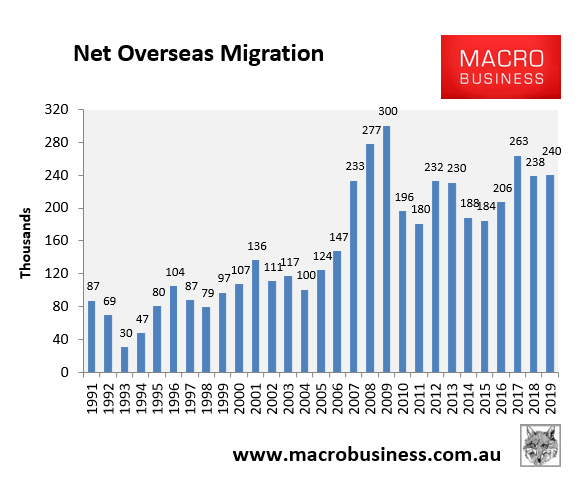
Per capita GDP growth collapsed:
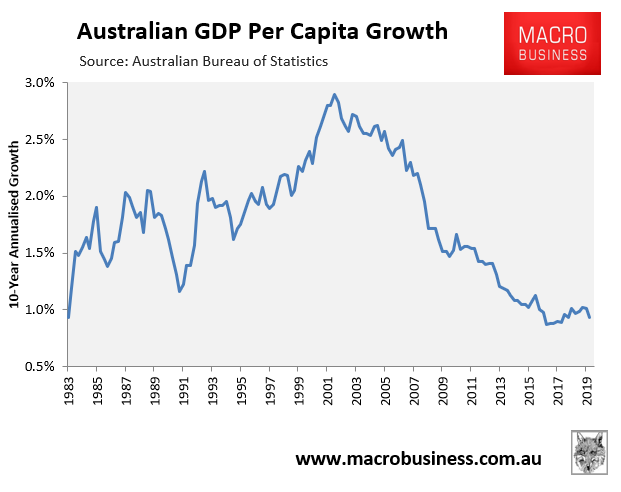
As has real per capita household disposable income growth:
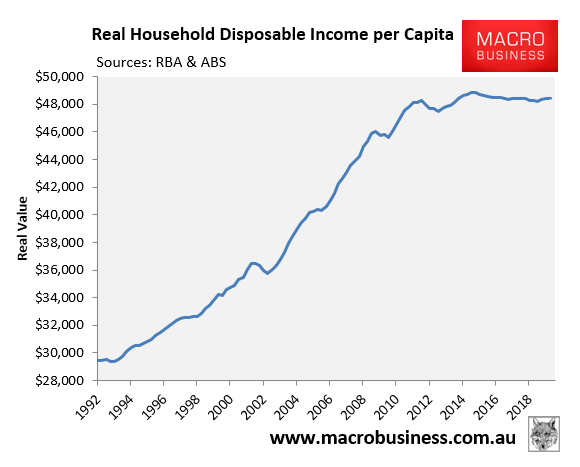
Surely public policy should be aimed at maximising individual living standards, not achieving an aggregate level of growth?
Back to Emerson:
There is no compelling evidence that permanent immigration reduces wages. On the contrary, by contributing to Australia’s skills base, it probably increases wage rates overall.
Wrong. The Department of Home Affairs’ Continuous Survey of Migrants shows that permanent migrants have significantly worse labour market outcomes than the general population:
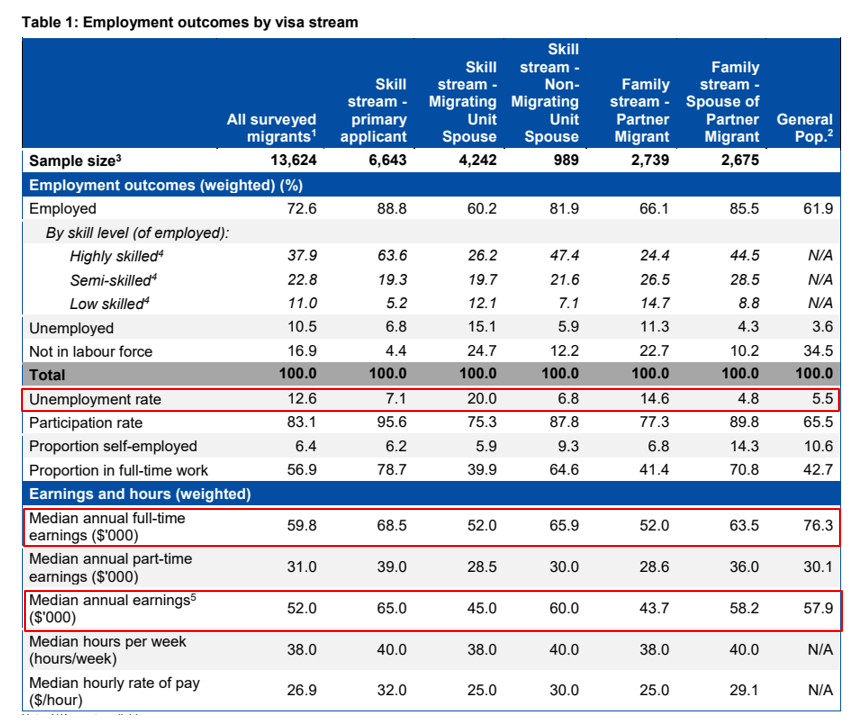
Specifically:
- The median annual full-time earnings of permanent migrants was $16,500 (22%) below the general population in 2017;
- The median annual earnings of permanent migrants was $5,900 (10.2%) below the general population in 2017; and
- The unemployment rate of permanent migrants (12.6%) was more than double the general population (5.5%) in 2017.
Even if we focus on the skilled stream only, both median earnings and unemployment is far worse than the general population:
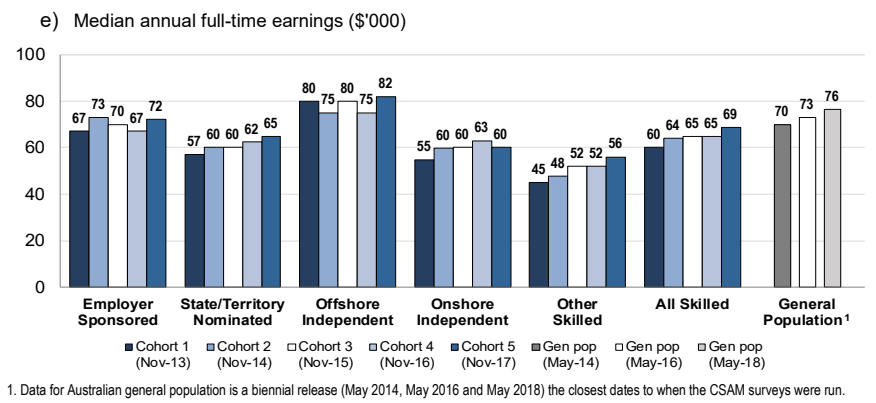
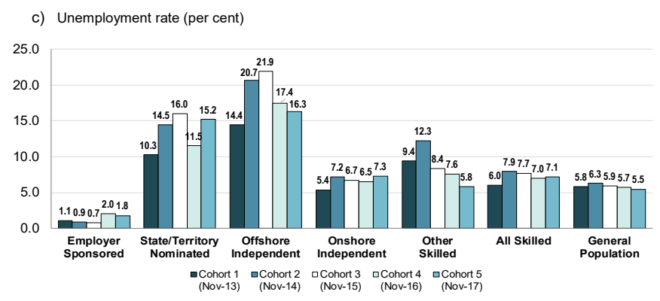
These are shocking results. The skilled stream accounts for 60% of Australia’s permanent migration program. They are purported to be highly qualified and brought into Australia to overcome so-called ‘skills shortages’.
These ‘skilled’ migrants should, therefore, be paid well above the general population, which comprises both skilled and unskilled workers, as well as have very low unemployment.
The fact that ‘skilled’ migrants are paid less, and suffer higher unemployment, is a damning indictment of Australia’s purported ‘skilled’ immigration system, and is bonafide proof that it is undercutting local workers.
The ABS’ Characteristics of Recent Migrants, November 2019 survey, released last week, also showed that migrants suffer much higher unemployment than the Australian born population:
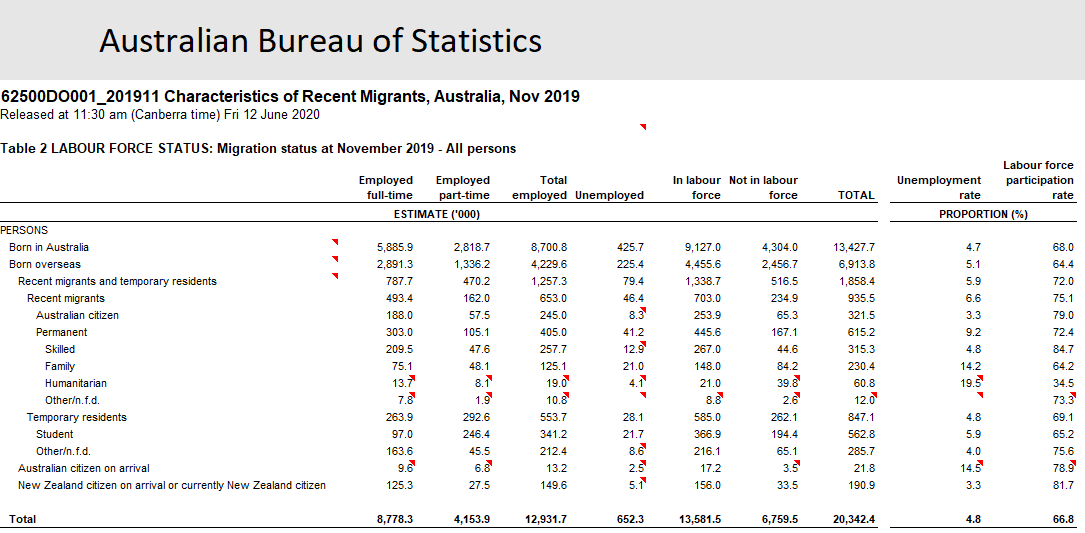
In particular, 9.2% of recent permanent migrants were unemployed in November 2019, double that of the Australian born population (4.7%).
So much for Craig Emerson’s bogus claim that permanent migrants are lifting wages. The evidence against this claim is standing in plain sight. One would have thought that a “labour” guy would bother to look them up.
Back to Emerson:
Another benefit of permanent immigration is that by bringing younger people to Australia, it freshens up the profile of an otherwise ageing population…
This is false over the long-run. Importing more migrants to solve population ageing is the equivalent of ‘can-kick economics’, because today’s migrants will also grow old, thus creating further ageing problems in 40 year’s time. Some will also bring in older family members.
Conveniently, Emerson has ignored the increasing labour force participation by older Australians:

Since the mid-2000s, the labour force participation rate of over-65s has more than doubled. There is obviously further scope for increases in participation given older Australians are remaining healthier for longer, as well as the legislated lift in Australia’s pension eligibility age to 67 by 2023.
Second, the ABS’ own demographic projections show that immigration is next to useless in ‘younging’ Australia’s population. That is, if we apply a more realistic definition for the working aged population of 19 to 70 (given more kids are staying in school and older Australians are working longer), then running annual net overseas migration (NOM) of 200,000 to 280,000 delivers only 3% more working-aged Australians by 2101 than zero NOM:
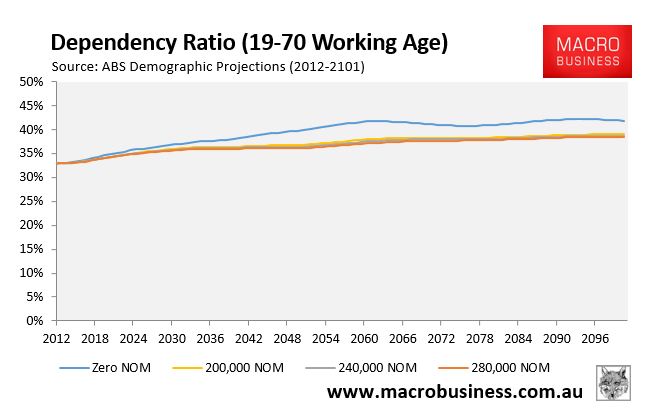
This tiny ‘benefit’ will only be transitory and comes at the expense of adding 150% to 200% more people to Australia’s population versus zero NOM:
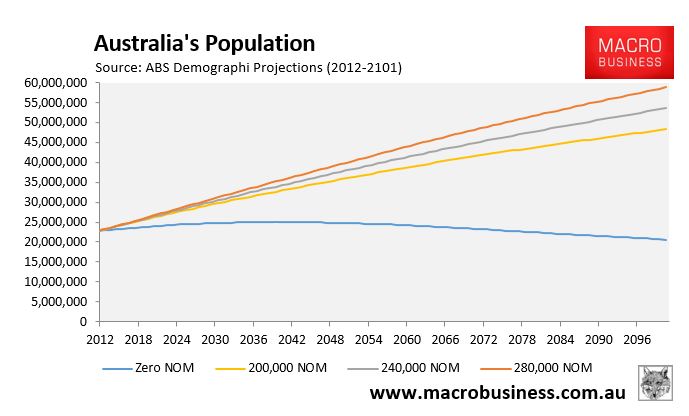
Such a massive increase in population will obviously take a massive toll on Australia’s natural environment and general liveability.
Back to Emerson:
Labor MP Julian Hill has proposed that addressing the backlog of 100,000 in applications for partner visas could be an effective way to quickly increase the permanent immigration intake.
Take a look at the first table above. Unemployment among migrating spouses is typically three times higher than the general population, whereas incomes are far lower. In pure economic terms, this proposal makes little sense.
Back to Emerson:
We need an economic reform program designed to lift national productivity and an immigration program that contributes to national prosperity, and not to wage suppression. That requires placing greater weight on permanent immigration, fed by cohorts of temporary visa holders, and less reliance on the ebb and flow of temporary migrants who the government never really intends to offer permanent residence to.
It’s hard to see how importing huge numbers of low wage migrants during a period of mass unemployment, and further crush-loading infrastructure, will contribute positively to individual prosperity, productivity or wage growth.
Craig Emerson has ignored entirely the costs of his beloved mass immigration ‘Big Australia’ policy.
The 17.5 million extra people projected by the ABS to arrive in Australia over the next 48 years – driven entirely by net overseas migration (both directly as they arrive by plane and indirectly as migrants have children) – will all require huge sums of public spending on economic and social infrastructure, such as schools, hospitals, roads, public transport, aged care, etc.

These costs can obviously be avoided by not running a mass immigration program in the first place.
Sure a bigger population enriches some people like property developers disproportionately, but it comes with great, largely hidden public costs, such as congestion of public infrastructure and facilities paid for by existing residents. That is, the benefits of immigration are often privatised and the costs are often socialised.
Indeed, the mass immigration program has lost public support because it has been so badly managed over the past 15 years.
Rather than following Craig Emerson’s bogus plan, all skilled migrants (both temporary and permanent) should be required to be employer-sponsored (given their far better employment outcomes – see above charts) and paid at least at the 75th percentile of earnings (preferably higher):

This would ensure that the visa system is used sparingly by businesses to employ only highly skilled migrants with specialised skills, not abused by businesses as a tool for undercutting local workers and eliminating the need for training.
Of course, applying these rules would dramatically reduce migrant flows, which shills like Craig Emerson would vigorously oppose.

